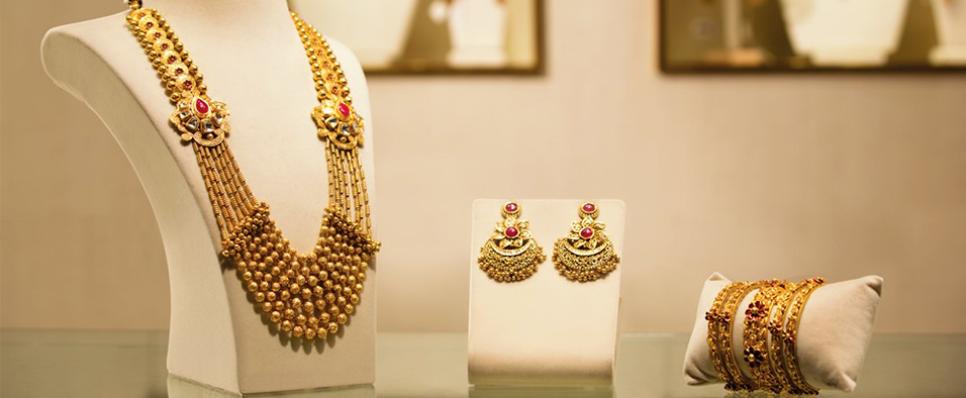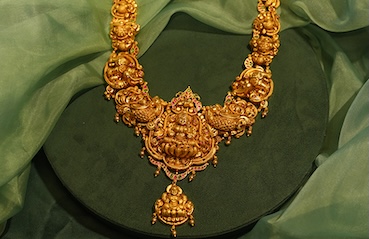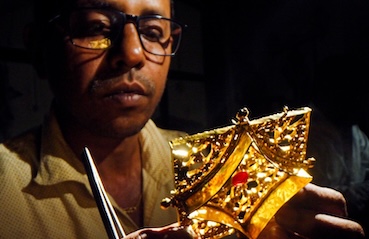Published: 07 Sep 2017
Are Gold jewellery Exporters in India one of the largest in the world?

Between 2015-2016, India exported gold worth 8.6 billion US dollars.
Since 2004, the gold and jewellery industry has earned over US$369bn (Rs19,024bn) of foreign exchange. And this is likely to increase by a compound annual growth rate of 5%–7% over the next 10 years.
What’s interesting, however, is that in 2015, less than 2 tonnes of gold mined in India and just over 950 tonnes imported to meet gold demand . So, what makes India one of the largest gold jewellery exporters in the world?
GOLD IMPORTERS
In the year 2015-2016, gold jewellery was exported to nearly 90 countries including UAE, Hong Kong, the US, the UK and Singapore. A majority of India’s gold jewellery demands originate from countries with large Indian populations. 50% of all Indian exports are to the UAE, which is home to an Indian expatriate community of more than 2.6 million – the largest expatriate community in the UAE.
GOLD DESIGNS
From the total amount of gold jewellery that India exports, plain gold jewellery accounts for almost 50% of this. Usually, cities like Mumbai, Kolkata and some other cities across South India export these gold sets and chains. South India, especially Tamil Nadu & Kerala, are very well-known for their unique gold designs. Inspired from nature, these gold designs are truly breath-taking and appreciated world over.
It is the uniqueness and variety of gold designs created in India that keep the demand for Indian gold jewellery high across the world. India’s handmade gold jewellery is in great demand across the world. Traditional Indian gold jewellery designs and awe-inspiring craftsmanship of artisans is talked-about all over the world. Gold jewellery styles like the Kundan and Meenakari take inspiration from the Mughal dynasty and are in huge demand.
GOLD TRADE
Round Tripping is the act of exporting gold of any form to another country, melting it down, and then re-importing it back to original the exporting country. This creates a circular flow of gold between countries. And this, in turn, increases the trade statistics.
Every country that engages in ‘Round Tripping’ has different reasons to do it. So, what happens in case of India? Well, India uses Round Tripping to secure cheaper finances by systematically boosting trade volumes. Certain policies and bodies were also started with the intention of boosting India’s trade. Have a look at few of them:
-
GJEPC
The Gem & Jewellery Export Promotion Council also known as GJEPC, was set up by the Ministry of Commerce, Government of India in 1966 to boost the Gem & Jewellery products export. As a result, exports rose from 28 million US dollars in 1966 -67 to almost 35 billion US dollars in 2013-2014.
-
SEZs
The Government of India started the Special Economic Zone (SEZ) initiative in 2000 to invite foreign trade. The Government understood how effective setting up an Export Processing Zone (EPZ) could be and was one of the first countries in Asia to do so.
-
SEEPZ
SEEPZ (Santacruz Electronics Export Processing Zone) was set up in 1973. It is currently one of the largest export zones in India. And gold jewellery accounts for the largest share: 84% (1.8 billion US dollars) of all jewellery exports made from the zone.
The future of the gems and jewellery sector is bright, not just for importing and exporting companies, but for workers too. According to a report by AT Kearney, the gems and jewellery industry employs over 2.5 million people, and has the potential of adding a further 0.7–1.5 million by 2020.
Read about: Career in Jewellery Designing











